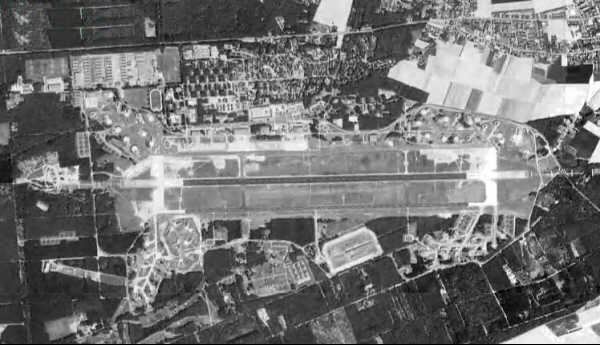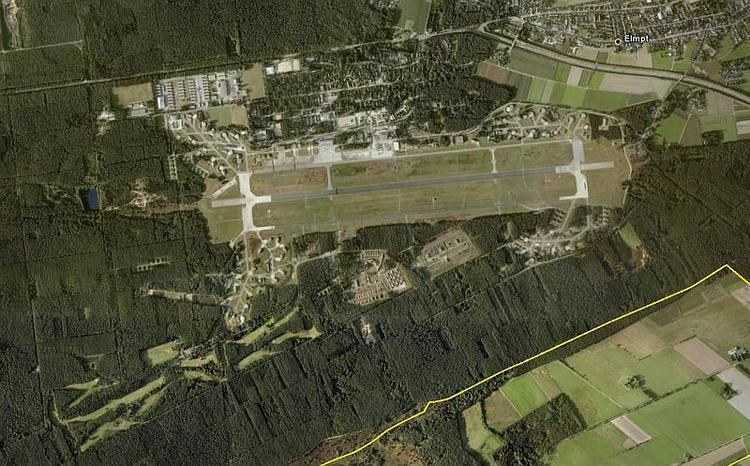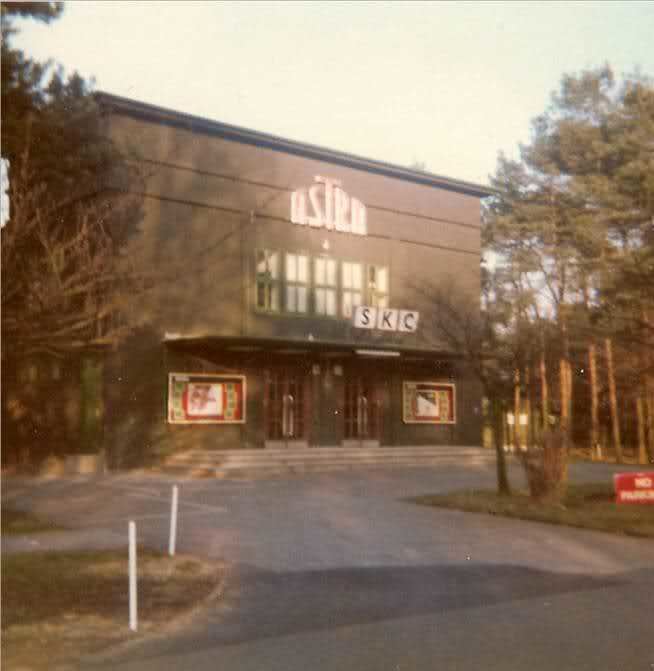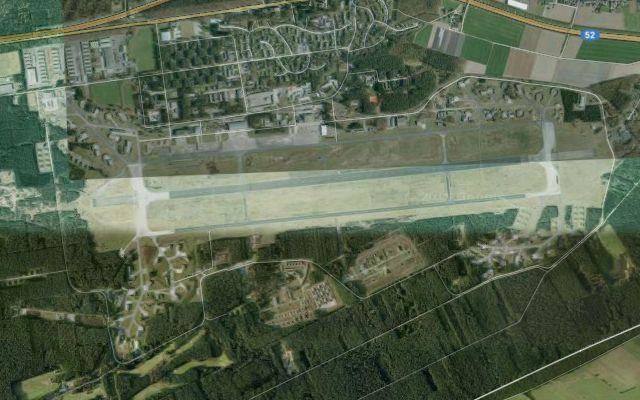Active 1953 – 15 June 2001 Type Flying station Branch Royal Air Force | Country Germany Owner Ministry of Defence | |
 | ||
Allegiance UK: British Armed Forces Role Fighter attack and defence Part of RAF Second Tactical Air Force,
then Royal Air Force Germany,
finally No. 2 Group RAF March Royal Air Force March Past | ||
Old raf bruggen pics
The former Royal Air Force Station Brüggen, more commonly known as RAF Brüggen, (IATA: BGN, ICAO: ETUR) in Germany was a major station of the Royal Air Force until 15 June 2001. It was situated next to the village of Elmpt, approximately 43 kilometres (27 mi) west of Düsseldorf near the Dutch-German border. The base was named after the village of Brüggen, the nearest rail depot. Construction began in mid-1952, which involved the clearing of dense forest and draining of marshland. The station became active in 1953 during the rapid expansion of NATO forces in Europe. In 2002 was handled over to the British Army and renamed Javelin Barracks.
Contents
- Old raf bruggen pics
- Raf bruggen 1991ish
- 317 Supply Transport Column
- 1954 1998 StrikeAttack role
- 1984 Nuclear Incident
- 1998 2001 Attack role
- Brggen squadrons
- Handover to Army
- Final closure
- References

Raf bruggen 1991ish
317 Supply & Transport Column

In 1953, the 317 Supply and Transport Column arrived at RAF Brüggen from Uetersen. This followed the decision to supply all RAF stations in Germany through the port of Antwerp. In 1954 the unit was redesignated as a Mechanical Transport Squadron and was responsible for equipping and supplying all RAF stations in Germany and The Netherlands. The unit remained at Brüggen until 1963, when it was amalgamated into the 431 Maintenance Unit which continued to operate until 1993. The demise of 317 MT Squadron marked the end of an era, as it had been on the continent shortly after D-Day under its previous title of 317 Supply & Transport Column. It had built itself an enviable reputation and following the cessation of hostilities carried out convoys to Prague, Warsaw and Moscow. In the 1950 Review of the Royal Air Force, the unit was described as the Carter Paterson of the autobahns.

Throughout its life, 317 carried out a number of humanitarian operations; the first being medical supplies to Bergen-Belsen. This was followed in 1947 by Operation Woodpecker in which timber and peat was supplied to the civilian population of northern Germany in one of the coldest winters on record. This was followed by the return of displaced persons and POWs to their home towns and cities within the British Zone. They were called upon again at the start of the Berlin Airlift (Operation Plain Fare), and lastly, in the winter of 1961, the Squadron took a convoy of fuel trucks to the oil refineries in Rotterdam for heating oil which was delivered to hospitals in Germany during the great freeze when the canals were inoperable.
1954-1998 - Strike/Attack role

From 1954? - 1957 the fighter squadrons at Bruggen were 67, 71E, 112 & 130, equipped initially with Canadair Sabre F.4s, later re-equipped with the Hawker Hunters. These squadrons were either redeployed or disbanded in 1957 with the arrival of 87 Squadron, equipped with Gloster Javelins.

The initial strike capability at RAF Brüggen was provided by the English Electric Canberra from the summer of 1957. From 1969 to 1975 the Phantom FGR.2 operated in the strike/attack role and was replaced by the SEPECAT Jaguar from 1975. The squadron Jaguars were replaced by the Panavia Tornado GR.1 beginning in 1984. With a total of four Tornado GR.1 squadrons at Brüggen, and 2 more at its nearby sister airbase RAF Laarbruch, Brüggen and Laarbruch formed the largest Tornado force in NATO. Hardened Aircraft Shelters were equipped with the U.S. Weapon Storage Security System (WS3), each able to store up to 4 WE.177 tactical nuclear bombs, for delivery by Tornado aircraft.
1984 - Nuclear Incident

On the 4 September 2007, the British military admitted that there had been an accident with a nuclear weapon at RAF Brüggen on 2 May 1984. The nuclear weapon fell from a transport truck, as the missile wasn't securely attached to the truck. The weapon was 8 times more powerful than the bomb that was dropped on Hiroshima in 1945. The casing was x-rayed after the incident, and found to have been undamaged, a testament to the inherent strength of nuclear weapons casings. The six people who were responsible for the accident, received a reprimand for their actions in the incident.
1998-2001 - Attack role

Following reunification of Germany, the RAF announced plans to reduce its presence in the country by half. One major part of this was the reduction of Tornado squadrons in Germany from seven to four, No.9, No.14, No.17 and No.31 squadrons. No.9, No.14 and No.31 squadrons took part in the Gulf War and operated from the base during NATO's air operations in the Kosovo War, supported by Vickers VC10 tankers.
The decision to remove all RAF assets from Germany was taken in 1996. As a result of the Strategic Defence Review No. 17 Squadron disbanded on 31 March 1999 and began the gradual drawdown of the base. No. 14 Sqn relocated to RAF Lossiemouth in January 2001. A formal ceremony on 15 June officially ended a continuous Royal Air Force presence in Germany since World War II and all of the remaining Tornados had left for RAF Marham by 4 September 2001.
Brüggen squadrons
Handover to Army
With the Royal Air Force having no use for site of the former RAF Brüggen, the base was handed over to the British Army on 28 February 2002 to become Elmpt Station, Javelin Barracks. The 18-hole RAF Brüggen Golf Club became West Rhine Golf Club.
Former units
Final closure
The barracks was closed in November 2015 and the site returned to the German authorities. Since December 2015 the accommodation units have been used by the German government to house refugees.
